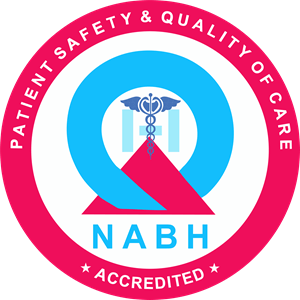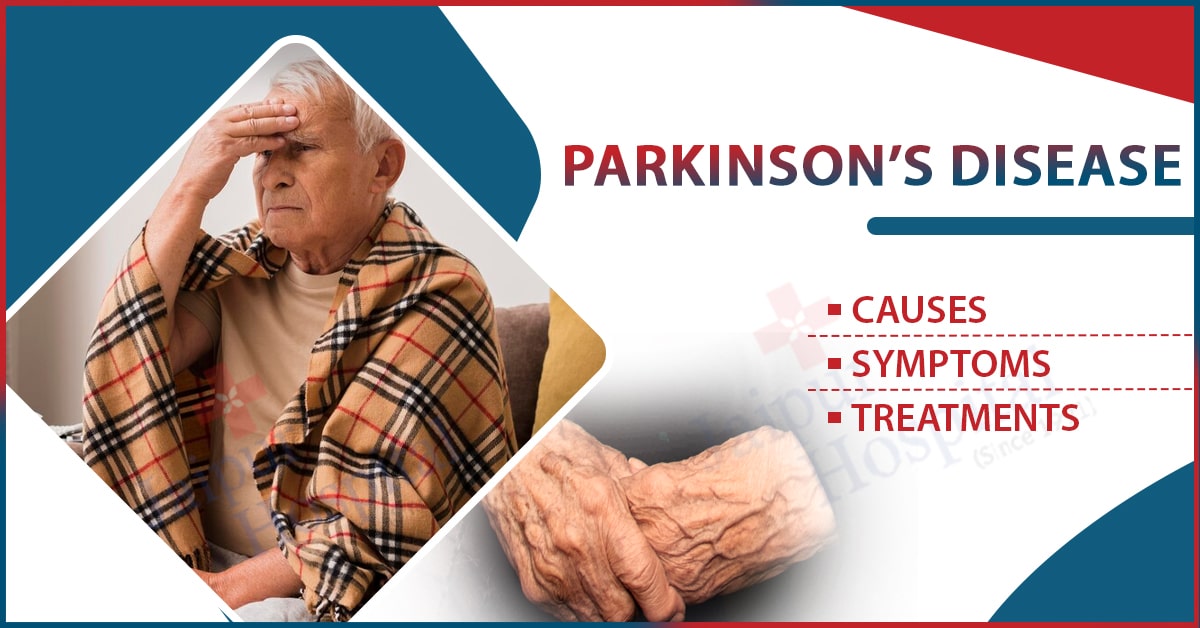Parkinson’s Disease (PD) is a progressive neurodegenerative disorder that primarily affects movement, leading to a variety of symptoms that can significantly impact daily life. Characterized by the loss of dopamine-producing neurons in the brain, this condition presents a unique set of challenges for those affected.
In this, we will explore the causes of Parkinson’s Disease, including genetic and environmental factors, as well as the hallmark symptoms that can range from tremors to stiffness and balance issues. Additionally, we will delve into the current treatment options available, from medication and therapy to innovative approaches such as deep brain stimulation, aimed at improving the quality of life for patients and their families.
What is Parkinson’s disease?
Parkinson’s Disease (PD) is a chronic and progressive neurodegenerative disorder characterized by the degeneration of dopaminergic neurons in the substantia nigra region of the brain, leading to a deficiency of dopamine. This deficiency manifests in a variety of motor symptoms, including bradykinesia (slowness of movement), rigidity, resting tremor, and postural instability, as well as non-motor symptoms such as cognitive impairment, mood disorders, and autonomic dysfunction. PD typically progresses over time, with symptoms worsening and affecting daily functioning, and is associated with various genetic and environmental risk factors.
Causes of Parkinson’s Disease
The causes of Parkinson’s Disease (PD) are multifactorial, involving a combination of genetic, environmental, and biological factors. Here are the main contributors:
- Genetic Factors: Certain gene mutations have been linked to Parkinson’s Disease, including SNCA, LRRK2, PARK7, PINK1, and PRKN. While genetic factors are more pronounced in early-onset Parkinson’s, they can also play a role in sporadic cases.
- Environmental Factors: Exposure to toxins such as pesticides, herbicides, and heavy metals has been associated with an increased risk of developing Parkinson’s Disease. Rural living and agricultural work are often cited as risk factors due to greater exposure to these substances.
- Age: The risk of developing Parkinson’s Disease increases with age, with most individuals diagnosed after the age of 60. The aging process may contribute to the degeneration of neurons.
- Oxidative Stress: An imbalance between free radicals and antioxidants in the body can lead to neuronal damage. Oxidative stress may play a role in the degeneration of dopamine-producing neurons.
- Mitochondrial Dysfunction: Mitochondria are responsible for energy production in cells. Dysfunction in these organelles can contribute to neuronal death, particularly in dopamine neurons.
- Inflammation: Chronic inflammation in the brain, potentially driven by immune system dysregulation, may contribute to the progression of Parkinson’s Disease.
- Neurotransmitter Imbalance: Besides dopamine, imbalances in other neurotransmitters, such as serotonin and norepinephrine, can influence the development and progression of symptoms of Parkinson’s Disease.
Symptoms of Parkinson’s disease
Parkinson’s Disease (PD) presents a variety of motor and non-motor symptoms that can significantly impact a person’s daily life. Here are the main symptoms:
Motor Symptoms:
- Tremors: Involuntary shaking or rhythmic movements, often beginning in the hands or fingers, especially at rest (resting tremor).
- Bradykinesia: Slowness of movement, making everyday tasks more time-consuming and difficult. This can also include a decrease in spontaneous movement.
- Rigidity: Muscle stiffness and tightness can limit the range of motion and cause discomfort.
- Postural Instability: Impaired balance and coordination, lead to difficulties in standing or walking, increasing the risk of falls.
- Gait Changes: Shuffling walk, reduced arm swing, and difficulty initiating movement can be observed.
Non-Motor Symptoms:
- Cognitive Impairment: Difficulty with concentration, memory, and decision-making, which may progress to dementia in advanced stages.
- Mood Disorders: Increased prevalence of depression, anxiety, and apathy among individuals with PD.
- Sleep Disturbances: Difficulty falling asleep, staying asleep, and experiencing vivid dreams or restless leg syndrome.
- Autonomic Dysfunction: Issues such as orthostatic hypotension (drop in blood pressure when standing), excessive sweating, and digestive problems.
- Speech and Swallowing Difficulties: Changes in speech volume and clarity (dysarthria) and difficulty swallowing (dysphagia).
- Reduced Sense of Smell: Hyposmia (reduced ability to smell) is often one of the earliest symptoms.
Diagnosis of Parkinson’s disease
Parkinson’s disease (PD) is a neurodegenerative disorder that primarily affects movement. Diagnosing it can be complex, as there are no definitive lab tests for PD. Diagnosis is mostly based on a clinical assessment by a neurologist, which includes:
- Medical History and Symptom Review:
- The doctor will ask about the patient’s medical history, family history, and symptoms.
- Key symptoms include tremors, bradykinesia (slowed movement), muscle rigidity, and postural instability.
- Non-motor symptoms like sleep problems, constipation, and mood changes may also be considered.
- Physical and Neurological Examination:
- The neurologist will examine the patient’s motor function, looking for signs such as tremors, stiffness, and slow movements.
- They may assess gait, balance, coordination, and facial expressions.
- Levodopa Response Test:
- Parkinson’s disease is often confirmed if the patient shows improvement with levodopa, a medication used to manage PD symptoms.
- A positive response to this drug can help differentiate PD from other disorders with similar symptoms.
- Imaging Tests:
- DaTscan (Dopamine Transporter Scan): This imaging test helps visualize dopamine levels in the brain. It can support a PD diagnosis by showing reduced dopamine activity.
- MRI or CT Scans: These are usually normal in Parkinson’s but are performed to rule out other conditions like strokes, tumors, or normal pressure hydrocephalus.
- Rule Out Other Conditions:
- Diagnosing PD often involves excluding other conditions that can cause similar symptoms (e.g., essential tremor, multiple system atrophy, or progressive supranuclear palsy).
Treatments For Parkinson’s Disease
While there is no cure for Parkinson’s disease (PD), several treatments help manage its symptoms and improve quality of life. The treatment plan is often personalized and can include medications, therapies, and sometimes surgery.
- Medications
Medications aim to increase or substitute for dopamine, which is reduced in Parkinson’s disease. Common drug therapies include:
- Levodopa/Carbidopa: The most effective drug for treating PD symptoms. Levodopa converts to dopamine in the brain, while carbidopa helps prevent side effects like nausea.
- Dopamine Agonists: These mimic dopamine effects in the brain (e.g., pramipexole, ropinirole). They may be less effective than levodopa but cause fewer motor fluctuations.
- MAO-B Inhibitors: These drugs (e.g., selegiline, rasagiline) block the breakdown of dopamine in the brain, slightly improving symptoms.
- COMT Inhibitors: Drugs like entacapone prolong the effect of levodopa by blocking an enzyme that breaks it down.
- Amantadine: This may help with mild symptoms and reduce involuntary movements (dyskinesia) caused by levodopa.
- Anticholinergics: These medications (e.g., benztropine) may help control tremors but are used less frequently due to side effects, especially in older patients.
- Surgical Treatments
Surgery is considered for patients with advanced Parkinson’s disease who no longer respond well to medications:
- Deep Brain Stimulation (DBS): A surgical procedure where electrodes are implanted in specific brain areas to regulate abnormal impulses. It can help reduce tremors, rigidity, and motor fluctuations. DBS is not a cure but can significantly improve quality of life.
- Physical and Occupational Therapy
- Physical Therapy: Helps improve mobility, flexibility, balance, and strength. A physical therapist can design exercises to help with walking and balance issues.
- Occupational Therapy: Focuses on adapting daily activities and environments to improve independence and safety.
- Speech Therapy: Some people with PD develop speech and swallowing difficulties, and speech-language pathologists help improve communication and swallowing techniques.
- Lifestyle Changes and Support
- Regular Exercise: Exercise is vital for people with Parkinson’s to maintain mobility, flexibility, and balance. Activities like walking, swimming, and tai chi are beneficial.
- Diet: A healthy diet rich in fiber and fluids helps manage constipation, a common problem in PD.
- Mental Health Support: Counseling, cognitive-behavioral therapy, and medications for mood disorders (like depression and anxiety) may be necessary.
- Complementary Therapies
- Massage Therapy: Helps relieve muscle stiffness.
- Acupuncture: Some studies suggest it may help alleviate certain PD symptoms.
- Music and Dance Therapy: These can improve movement, balance, and emotional well-being.
Also Read:- https://jaipurhospital.in/sinus-infection/
Prevention of Parkinson’s Disease
While there is no guaranteed way to prevent Parkinson’s disease (PD), certain lifestyle choices and factors may reduce the risk of developing the condition. Here are some strategies that may help:
- Regular Exercise
- Engaging in regular physical activity can have protective effects on brain health. Activities such as walking, swimming, cycling, and strength training may help improve overall motor function and reduce the risk of PD.
- Healthy Diet
- Mediterranean Diet: Rich in fruits, vegetables, whole grains, fish, and healthy fats (like olive oil) may be beneficial.
- Antioxidant-Rich Foods: Foods high in antioxidants, such as berries, nuts, and leafy greens, can help combat oxidative stress, which is linked to neurodegeneration.
- Avoiding Toxins
- Exposure to certain environmental toxins, such as pesticides and heavy metals, has been associated with an increased risk of PD. Limiting exposure to these substances, particularly for those in agricultural professions, may be helpful.
- Caffeine Intake
- Some studies suggest that moderate coffee consumption may be associated with a lower risk of developing Parkinson’s disease. The neuroprotective effects of caffeine are thought to play a role, although more research is needed.
- Maintaining a Healthy Weight
- Obesity and related health issues may increase the risk of developing Parkinson’s disease. Maintaining a healthy weight through diet and exercise can be beneficial.
- Social Engagement
- Staying socially active and maintaining strong social connections can promote mental well-being and may reduce the risk of neurodegenerative diseases.
- Protecting Brain Health
- Engaging in mentally stimulating activities, such as puzzles, reading, and learning new skills, can help keep the brain healthy. Some studies suggest that lifelong learning may be protective against neurodegeneration.
- Avoiding Head Injuries
- There is evidence that traumatic brain injuries can increase the risk of developing Parkinson’s disease. Taking precautions during sports and other activities to avoid head injuries can be important.
- Genetic Considerations
- If there is a family history of Parkinson’s disease, discussing genetic counseling or testing with a healthcare provider can provide insights into personal risk factors.
- Regular Medical Check-ups
- Regular health check-ups can help monitor and manage any existing health conditions that might contribute to neurological decline.
Conclusion
In conclusion, Parkinson’s disease is a complex neurodegenerative disorder that significantly impacts movement and quality of life. Although there is currently no cure, a combination of medication, therapy, and lifestyle modifications can effectively manage its symptoms and improve patient well-being.
For individuals seeking specialized care for Parkinson’s disease, Jaipur Hospital stands out as a leading Hospital. The hospital’s Neurology Department offers comprehensive assessments, cutting-edge treatments, and ongoing support tailored to the unique needs of each patient. With a dedicated team of specialists, Jaipur Hospital is committed to providing the highest standard of care for those affected by Parkinson’s disease, ensuring they receive the best possible outcomes.


